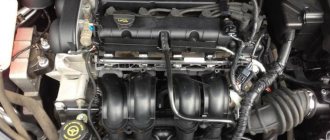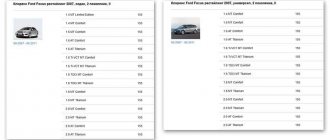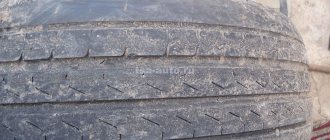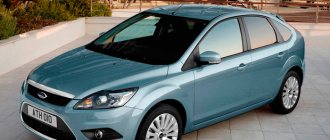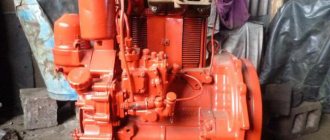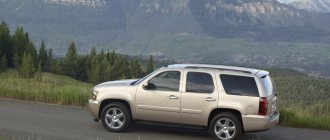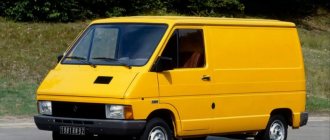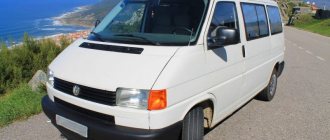Ford Focus 3 was presented to the general public back in 2010. But after five years it remains just as popular among car enthusiasts. Three versions of the car are available to buyers: hatchback, sedan and station wagon. In addition, there is also a “charged” Ford Focus 3 RS, released quite recently.
Photo of Ford Focus 3rd generation
Appearance of Ford Focus 3
Regardless of the chosen body type, the Ford line has the same front end.
The headlights have a shape similar to that of an almond. At the same time, top-end car configurations are equipped with xenon and LED daytime running lights. In this version, the manufacturing company continued the previously chosen sporty style, which characterizes the design of the bumper, which has a rather large air intake and imperceptibly passes into the side of the body. The latter is divided into three parts by jumpers, and under it there is an aerodynamic “skirt”.
Focus MK3 - photos
The rear part of the hatchback has pillars piled forward, on the sides of which there are headlights that extend to the side. A spoiler is installed above the glass.
The sedan has become more refined in comparison with the second version of the car. The wheel arches add style to the appearance, and the rear end, with its small wing, sleek shape and elongated headlights, looks like it belongs on a high-end car.
Photos of Ford Focus 3 2014-2015
Head optics
Wheels Ford Focus MK3
As for the station wagon, it is simply a hatchback extended back. That's why there are so many similarities between the two bodies.
The RS model, as already noted, is “charged”. This means that everything in its appearance suggests that this car belongs to the sports class. It has the most “powerful” bumper of all versions of the third Focus with a fairly large air intake and fog lights “resting” in a plastic pentagon. At the rear, the manufacturer installed a large rear wing and a bumper with a diffuser, on which two exhaust pipes stand out.
Ford Focus 3 interior
The interior of the Ford Focus 3 is practically no different in all three standard versions of the car. The kinetic design adopted in the previous series can also be seen here.
Photos of Ford Focus 3 interior
The materials used in the finishing have become even higher quality. Ergonomics have improved their characteristics. The steering wheel can be adjusted in two planes. Four “arrows” extend from its central part in the manner of bicycle spokes. This element of the interior has undergone some changes, and now the girth has become even more reliable and comfortable.
Driver's seat
Two “wells” are visible on the dashboard, where the tachometer and speedometer have found their place. Between them there is a small display where information coming from the on-board computer is displayed. The quality of its execution speaks for itself: pleasant blue illumination, clarity of letters and numbers.
The center console is made in the same style, which is noticeable in other Ford cars. It is slightly extended forward and has a rounded shape. Here, as always, there is a touch screen (installed on expensive versions), a climate control or air conditioning control system, two vertical air ducts and a multimedia system.
Salon Focus 3rd generation
Salon Focus 3
Continuing the policy of ergonomics, Ford specialists spent a lot of time on the correct placement of the gear lever and the parking brake installed next to it.
The seats have lateral support, a prominent profile and slightly firm padding. In the back, which is unusual for a Focus, only two people can fit normally. The luggage compartment has a volume of 277 liters. At the same time, by choosing a different body and folding the backs of the sofa, you can increase this figure to 1062 liters.
The interior of the RS version is not much different from the standard version of the car. Its sportiness is emphasized only by the modified shape of the steering wheel, additional instrument lighting and sensors located on the windshield.
Ford Focus 2014 MK3 interior
Ford Focus Dimensions
Ford Focus Hatchback
| Year of issue | Length (mm) | Width (mm) | Height (mm) | Weight (kg) |
| 1998, 1999, 2000, 2001, 2002, 2003 | 4152 | 1702 | 1430 | 1059 |
| 2005, 2006, 2007, 2008, 2009, 2010 | 4342 | 1840 | 1497 | 1229 |
| 2011, 2012, 2013, 2014, 2015, 2021, 2021, 2021, 2019 | 4358 | 2010 | 1461 | 1270 |
Ford Focus Sedan
| Year of issue | Length (mm) | Width (mm) | Height (mm) | Weight (kg) |
| 1998, 1999, 2000, 2001, 2002, 2003 | 4362 | 1702 | 1430 | 1081 |
Ford Focus Station Wagon
| Year of issue | Length (mm) | Width (mm) | Height (mm) | Weight (kg) |
| 1998, 1999, 2000, 2001, 2002, 2003 | 4438 | 1702 | 1447 | 1180 |
| 2005, 2006, 2007, 2008, 2009, 2010 | 4472 | 1840 | 1501 | 1277 |
| 2011, 2012, 2013, 2014, 2015, 2021, 2021, 2021, 2019 | 4468 | 1839 | 1501 | 1340 |
The second generation car was sold in the period 2004-2011. Thus, the 2008 restyling allowed the car to remain on the assembly line for another three years. It should be noted that the platform of the second Focus was used in the premium model Volvo S40, as well as in its closest competitor, the previous generation Mazda 3.
The third generation Ford Focus debuted in Detroit in 2010. The car replaced the second generation European Focus. The model is based on the design of the “kinetic” Iosis Max concept car. After updating in 2014, the model received a rather controversial design in the style of Aston Martin.
In 2021, sales of the fourth generation Ford Focus began. The car was designed by Germans from Ford Germany. The car received three versions - a five-door hatchback, as well as a sedan and station wagon.
Specifications Focus MK3
On the Russian market, Ford Focus 3 is offered with one of four petrol or diesel engines. There are practically no changes in this regard compared to the second version.
Now the car can be equipped with gasoline engines of 1.6, 1.8 and 2 liters. Depending on the boost level, it is capable of delivering 85, 105, 125 and 150 hp. respectively. In the first case, the Focus is equipped only with a five-speed manual gearbox, in the second - a choice of “mechanics” or a 6-speed “automatic”. The diesel version of the engine has a volume of 2 liters and produces 140 hp. It comes with a 6-speed automatic transmission. The RS version received a 2.3-liter engine with turbocharging. This unit is capable of producing as much as 320 hp. This vehicle configuration features an improved version of the six-speed automatic transmission and Ford Performance AWD all-wheel drive. In general, the technical characteristics of the Ford RS deserve special consideration.
| Technical characteristics of Ford Focus 3 | |||||
| Engine | 1.6 MT (105 hp) | 1.6 AMT (105 hp) | 1.6 MT (125 hp) | 1.6 AMT (125 hp) | 2.0 AMT (150 hp) |
| Maximum speed, km/h | 189 | 184 | 198 | 195 | 202 |
| Acceleration to 100 km/h, s | 12.4 | 13.2 | 11 | 11.8 | 9.4 |
| Fuel consumption, l city / highway / mixed | 8.1 / 4.8 / 6 | 9.3 / 4.8 / 6.4 | 8.1 / 4.8 / 6 | 9.3 / 4.8 / 6.4 | 9.1 / 4.9 / 6.4 |
| Fuel brand | AI-95 | AI-95 | AI-95 | AI-95 | AI-95 |
| Environmental class | Euro 5 | Euro 5 | Euro 5 | Euro 5 | Euro 5 |
| CO2 emissions, g/km | 139 | 149 | 139 | 149 | 149 |
All about the weak points of the Ford Focus 3 (photos and videos).
Good afternoon. From this article you will learn about the weak points of the Ford Focus 3. Traditionally for our site, the article will contain a lot of photos and video material.
The Ford Focus of the first two generations has become a real bestseller in our market. The third generation car, the world premiere of which took place in 2010, was received more calmly by our car enthusiasts, but it also overtook many strong competitors in terms of sales volumes. Now, in addition to the new Ford Focus, car enthusiasts can also take a closer look at used options. But how many unpleasant tricks will a “third” Focus with mileage throw up during operation? This is what we will find out now.
Body.
Since the third generation Ford Focus has not been in production for too long, it will not be possible to find rust spots on its body. Foci of corrosion can only be seen on those specimens that have been in serious accidents and were not restored in the best way after them. But poorly fitting doors and foggy front optics are far from uncommon on the third-generation Focus. Fortunately, fogging can be easily cured by replacing the usual headlight plugs with the same ones, but with ventilation holes. Owners also complain that the windshield becomes covered with small scratches too quickly.
Salon.
The interior of the Ford Focus 3 is comparable in quality of finishing materials to those of most of its classmates. However, assembly flaws and uneven gaps in most cars can be easily detected. Naturally, the third generation Focus is not free from “crickets”, which most often settle in the area of the radio and air ducts on the front panel.
Line of engines.
The vast majority of the “third” Ford Focus that were officially sold on our market will have a 1.6-liter gasoline engine under the hood, which, depending on the degree of boost, can develop 85, 105 and 125 horsepower. The two weakest versions, even if they please with fairly low fuel consumption, are better to refuse immediately.
For a fairly heavy car, 105 horsepower, and even more so 85 “horses,” is frankly not enough. If we talk about the problems that Ford Focus gasoline engines can cause, then we will happily admit that so far there are practically none. Many Focus owners are alarmed by a rattling noise at the top of the engine, which tends to get worse as it warms up, but there is no need to be afraid of this. This is just a feature of the injectors. By the way, unusual sounds are also produced by the two-liter gasoline GDI, which is quite often found on those Ford Focus that were sold in Western European countries. Europeans also love the diesel Focus, which can easily withstand a range of 200 thousand kilometers, but in our country such versions of the car are extremely rare on sale.
In the first batches of Focus, the 1.6-liter engines were distinguished by unstable operation, tripping and loss of traction after a cold start. Ford first tried to explain this behavior of power units by premature deposits of carbon deposits in the combustion chamber, after which they released new firmware for the power unit control module. The problem has disappeared.
Transmission problems.
But there are more problems with 3rd generation Ford Focus gearboxes. Even “mechanics” after 5-10 thousand kilometers can upset you with leakage of axle shaft seals. Otherwise, however, there are no complaints about the manual gearbox. But PowerShift . Not only does it begin to change gears with noticeable jerks in slow traffic jams, but also during acceleration it can frighten with a metallic grinding sound when changing gears. When the number of complaints about PowerShift exceeded the acceptable level, Ford was forced to issue a special technical bulletin that ordered the reprogramming of the transmission control module. This partially solved the problem - the vibrations of the box decreased and gear shifts became smoother.
Suspension.
The suspension of the third generation Ford Focus is quite strong and cannot in any way be called a weak point. Up to 100 thousand kilometers, and most cars sold are just approaching this mark; it does not require attention! So at the moment, the only serious complaint about the Focus suspension is the appearance of extraneous sounds when driving over bumps, which tend to intensify with the onset of cold weather.
Steering is the weak point of the Ford Focus 3.
Compared to the suspension, the steering of the “third” Focus seems frankly unfinished. After 5-7 thousand kilometers, the steering rack may begin to knock. And all because of the play of the left steering rod. And the worst thing is that replacing the rack does not fundamentally solve the problem. After the same 10 thousand kilometers, the knocking appears again. Not all is well with electric power steering. Sometimes he can refuse at the most inopportune moment. The culprit is the electric power steering motor. Although there is no need to rush to change it right away. Sometimes the functionality of the electric amplifier can be restored by simply turning the ignition off and on.
Conclusion.
It’s impossible to call the third generation Ford Focus an absolutely problem-free car. If its engines and suspension as a whole do not cause problems, then you should expect unpleasant surprises from the steering and gearboxes after a run of 10 thousand kilometers. Perhaps this is what influenced the fact that the “third” Focus did not become as popular as its predecessors. On the other hand, in terms of reliability, most competitors of the Ford Focus, if even better, are only slightly better. So you shouldn’t refuse to buy a used third-generation Focus. With timely maintenance, the car will serve faithfully for many years.
For those who don’t like to read a lot - a short video review of the interior, exterior and problems of the Ford Focus 3:
That's all for me today. If you want to add to the article about the weak points of the Ford Focus 3, please write comments.
Best regards, administrator
Share
Price of Focus 3rd generation
The price varies greatly depending on the configuration chosen. The cost of the simplest hatchback is 532 thousand rubles. The maximum version “steps over” 1 million rubles. The exact cost of the Ford RS is still unknown. But they will demand at least 40 thousand dollars for it.
| Options and prices | ||||||
| Equipment | Power | Price | checkpoint | Engine | Drive unit | |
| Ford Focus 1.6 hatchback (85 hp) | ||||||
| Ambiente | 85 hp | 775,000 rub. | Manual transmission | petrol | front | |
| Ford Focus 1.6 hatchback (105 hp) | ||||||
| SYNC Edition | 105 hp | 946,000 rub. | Manual transmission | petrol | front | |
| SYNC Edition | 105 hp | RUB 981,000 | Automatic transmission | petrol | front | |
| Ford Focus 1.6 (105 hp) | ||||||
| SYNC Edition | 105 hp | RUB 956,000 | Manual transmission | petrol | front | |
| SYNC Edition | 105 hp | 991,000 rub. | Automatic transmission | petrol | front | |
